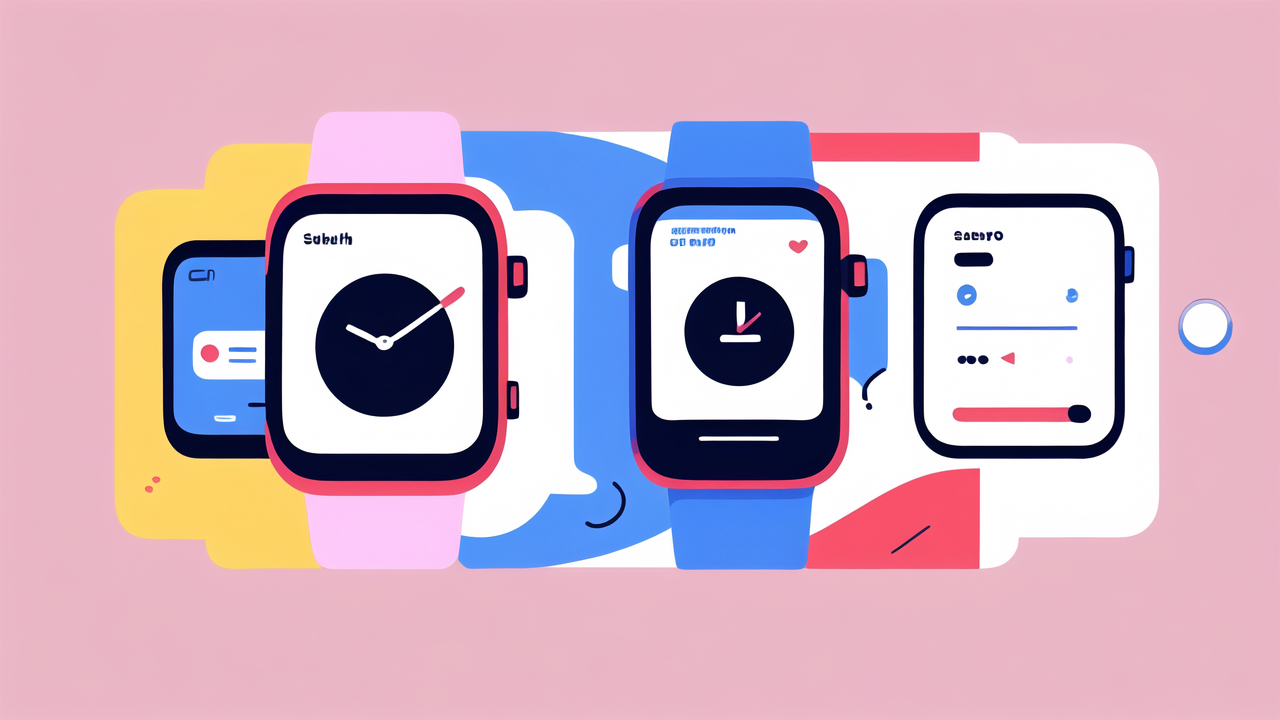The Evolution of Wearable Fitness Technology in the United States
From Pocket-Sized Pendants to Smart Watch Integration
Wearable fitness tech has come a long way in the US. It started with simple step counters. These were small devices you could clip to your belt or pocket. They only tracked steps and distance.

As tech improved, we saw the rise of fitness bands. These were worn on the wrist. They could track more data, like heart rate and sleep patterns. They were a big step forward.
Then came smart watches. These devices combined fitness tracking with smartphone features. They could show notifications, make calls, and run apps. Smart watches quickly became popular.
Now, we're seeing smart watches integrate with clothing. This is the next big leap in fitness tech. It promises to give us even more detailed health data.
Understanding the Wearable Fitness Market Growth
The wearable fitness market in the US has seen huge growth. In 2015, about 1 in 5 Americans owned a wearable device. By 2022, that number had doubled.
Smart watches lead this growth. They make up over half of all wearable sales. Brands like Apple, Fitbit, and Garmin are top sellers.
The market is expected to keep growing. Experts predict it will reach $70 billion by 2025. This growth is driven by several factors:
- Increasing health awareness
- Advances in technology
- More affordable devices
- Growing interest in data-driven fitness
As the market grows, we're likely to see more innovation. This includes better integration with clothing and other devices.
Regulatory Impact on Fitness Wearables
As fitness wearables become more advanced, they face more regulatory scrutiny. The FDA has taken notice of these devices. They're especially interested in those that claim to monitor health conditions.
In 2018, the FDA approved the first smart watch for medical use. This opened the door for more health-focused features. But it also means more oversight.
Companies now need to be careful about health claims. They must back up any medical features with solid research. This has led to more partnerships between tech companies and medical experts.
The regulatory landscape is still evolving. As devices become more advanced, we may see new rules. These could impact how companies design and market their products.
Innovative Smart Watch Features in the Health and Fitness Niche
Advanced Heart Rate Monitoring and GPS Tracking
Smart watches have made huge strides in heart rate monitoring. Early models could only check your pulse now and then. Now, they can track your heart rate 24/7.

This constant monitoring can spot patterns and anomalies. Some watches can even detect signs of atrial fibrillation. This is a serious heart condition that often goes unnoticed.
GPS tracking has also improved. Watches can now map your runs and bike rides with high accuracy. They can show your pace, elevation changes, and more. Some even offer navigation features.
These advances make smart watches powerful tools for fitness enthusiasts. They provide data that was once only available in labs or with pro equipment.
Integration of AI and Machine Learning
AI and machine learning are changing how smart watches work. These technologies help make sense of all the data these devices collect.
AI can spot patterns in your activity and health data. It can then offer personalized advice. For example, it might suggest when to rest or when to push harder in your workouts.
Machine learning helps watches get smarter over time. They learn your habits and preferences. This allows them to give more accurate predictions and insights.
Some watches now use AI to detect falls or unusual heart rhythms. They can even call for help in emergencies. As AI improves, we can expect even more advanced features.
The Rise of Lifestyle and Wellness Coaching
Smart watches are becoming personal wellness coaches. They don't just track data – they offer advice and motivation.
Many watches now include guided workouts. These can range from simple stretching to full HIIT sessions. Some even have on-screen coaches to guide you through exercises.
Watches are also tackling stress and mental health. They offer breathing exercises and meditation guides. Some track stress levels and suggest ways to relax.
Sleep tracking has become more advanced too. Watches can analyze your sleep patterns and offer tips for better rest. They might suggest when to go to bed or how to improve your sleep environment.
Integrating Smart Watches into Wearable Clothing
Challenges and Opportunities in Wearable Clothing Technology
Integrating smart watches with clothing presents both challenges and opportunities. The main challenge is making the tech seamless and comfortable.

Designers must find ways to embed sensors without affecting the feel of the clothes. They also need to ensure the tech can withstand washing and wear.
Power is another challenge. Clothes with built-in tech need a power source. This could mean batteries or new ways to harvest energy from movement.
Despite these challenges, the opportunities are exciting. Clothing could track more detailed body metrics. It could monitor posture, muscle activity, and even hydration levels.
Smart clothing could also adapt to your needs. Imagine a jacket that adjusts its insulation based on your body temperature and activity level.
The Role of Smart Watches in Enhancing User Experience
Smart watches play a key role in the wearable clothing ecosystem. They act as the central hub for all your wearable tech.
The watch can collect data from sensors in your clothes. It then processes this data and presents it in an easy-to-understand format.
This integration allows for more comprehensive health tracking. For example, a smart shirt could track your breathing rate. The watch could combine this with heart rate data for a fuller picture of your fitness.
Watches also provide a familiar interface. Users are already comfortable with smartwatch apps and controls. This makes it easier to adopt new wearable clothing tech.
Future Trends in Wearable Fitness Technologies
The future of wearable fitness tech is exciting. We're likely to see even closer integration between watches and clothing.
One trend is towards "invisible" tech. Sensors will be woven directly into fabric fibers. This will make smart clothing indistinguishable from regular clothes.
Another trend is more specialized wearables. We might see smart shoes for runners or smart gloves for weightlifters. These could offer highly detailed, sport-specific data.
AI will play a bigger role too. It will help make sense of all the data from our various wearables. This could lead to more personalized health and fitness advice.
Finally, we may see wearables that go beyond fitness. They could monitor for health conditions or even deliver medication. The line between consumer gadgets and medical devices may start to blur.
As these trends develop, smart watches will remain at the center. They'll be the bridge between our bodies, our clothes, and the digital world.




Leave a comment
This site is protected by hCaptcha and the hCaptcha Privacy Policy and Terms of Service apply.